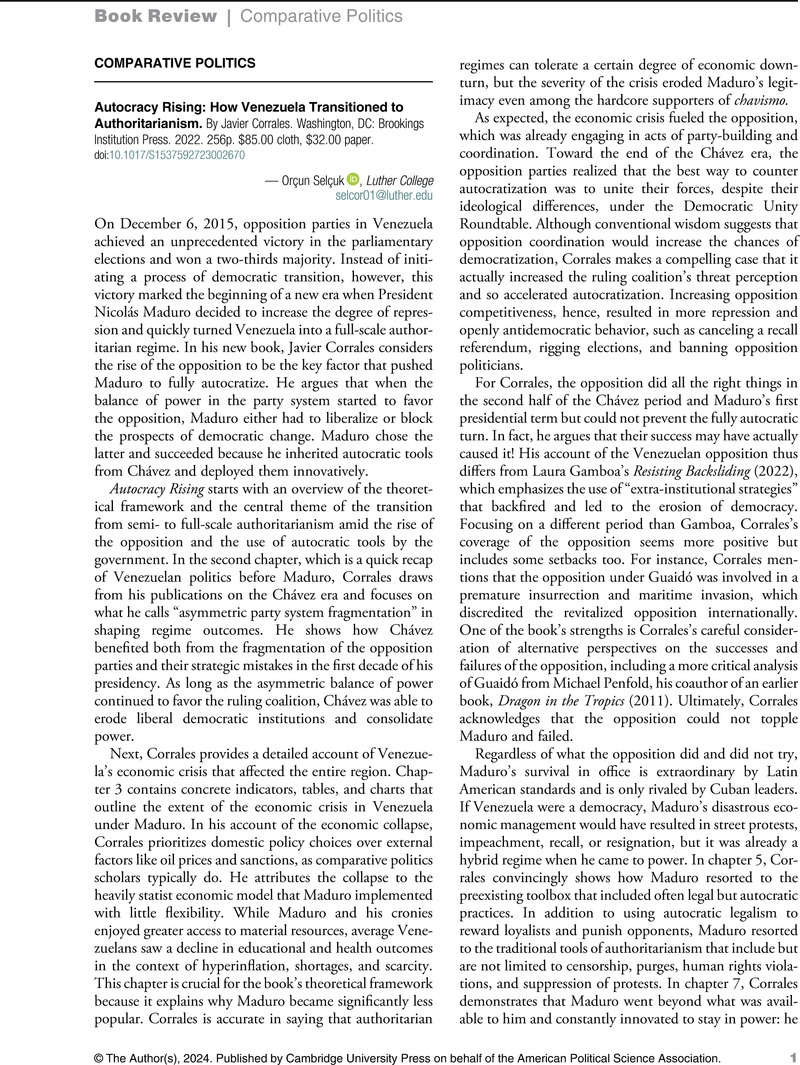No CrossRef data available.
Article contents
Autocracy Rising: How Venezuela Transitioned to Authoritarianism. By Javier Corrales. Washington, DC: Brookings Institution Press. 2022. 256p. $85.00 cloth, $32.00 paper.
Review products
Autocracy Rising: How Venezuela Transitioned to Authoritarianism. By Javier Corrales. Washington, DC: Brookings Institution Press. 2022. 256p. $85.00 cloth, $32.00 paper.
Published online by Cambridge University Press: 11 January 2024
Abstract
An abstract is not available for this content so a preview has been provided. Please use the Get access link above for information on how to access this content.

- Type
- Book Reviews: Comparative Politics
- Information
- Perspectives on Politics , Volume 22 , Issue 3: Special Section: Partisanship and Political Division , September 2024 , pp. 899 - 901
- Copyright
- © The Author(s), 2024. Published by Cambridge University Press on behalf of American Political Science Association


